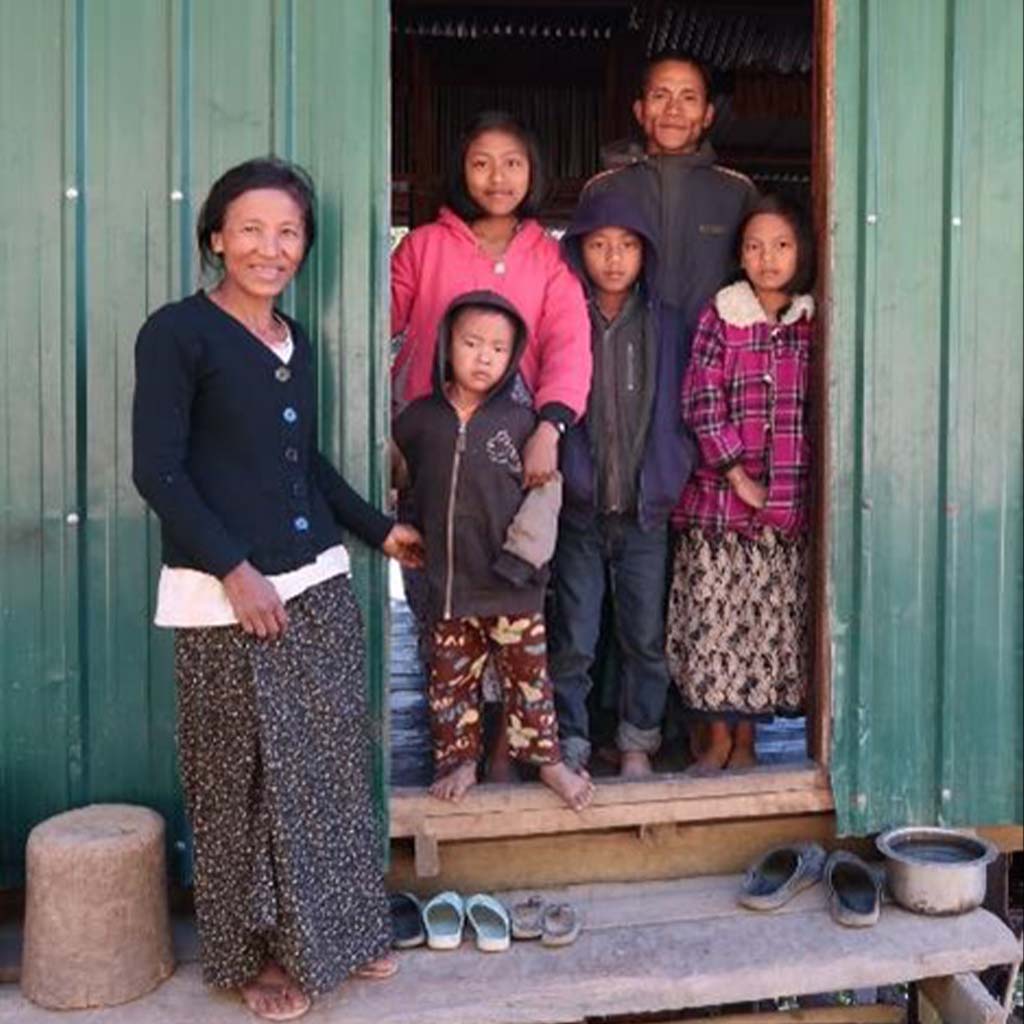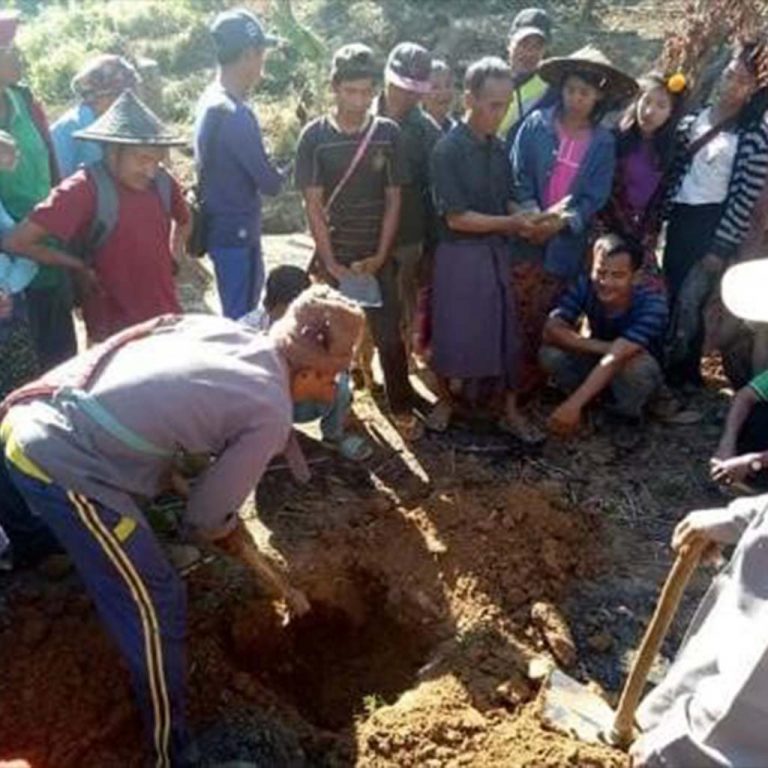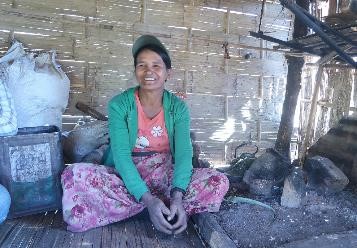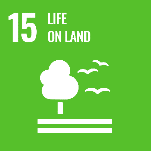Food Security
Our goal
- To build more resilient communities by opening up opportunities to farm in ways that improve crop variety, enable year-round food availability, and protect precious natural resources
- To open new opportunities for households to diversify livelihoods to meet needs for income
The challenges
Food insecurity is a chronic problem in much of Chin State. 40.3% of children here suffer from chronic malnutrition (the highest rates in the country), and in southern Chin State, it is estimated that only 15.3% of the population have an adequate diet. Malnutrition contributes to poor health and education outcomes, perpetuating poverty for the most vulnerable. The shifting cultivation method (slash-and-burn) which was once appropriate for the context is now failing to produce enough food for a growing population,
“The land is not talking to us anymore. Our food is not talking to us. Nature is not talking to us anymore. Slash and burn is all we have – it is our stomach. But it is not providing for us anymore. We work all year, but only get food for one to two months.”
~ Mara elder
and long-time farmers are struggling with unpredictable rain cycles, lower soil fertility and frequent uncontrolled fires which threaten to devastate the surrounding forests. Food insecurity is intensified by the remote nature of the location, including lack of road access. This makes it difficult and expensive to get agricultural inputs or reach markets for trade or to purchase food or other goods. In the past, cash needs were few, but now these are growing as the community has greater access to consumer goods, and the demands of the costs of education, healthcare or buying some portion of their food is put a strain on farmers. Overall, food insecurity combined with a changing context are driving residents of this region to consider re-casting their lives and livelihoods: from long-employed forms of subsistence agriculture to mixed livelihoods and new modes of food production.


Achievements in Food Security
(and related rural livelihood themes)
Current Programme:
- 209 farmer families are pioneering new methods and benefiting from improved food availability, dietary diversity, and income
- 4 communities are becoming a model for others as they adopt new approaches to managing water, forests and land
- 100 acres of land have been converted from shifting cultivation to permanent, sustainable farms
Past Achievements*:
- 21 communities participated in the ‘Rural Integrated Development Program’ started in 1998, addressing various community priorities, including rice mills, livestock rearing, water system construction, and mini-hydropower systems
- 108 miles of 8ft-wide rural roads and 12 wooden bridges were constructed by hand together with community volunteers – opening access to markets, healthcare, and education opportunities
*These achievements were reached before TSD was an independent NGO, but while TSD staff were working as a department of the Mara Evangelical Church.
Our response
TSD provides communities with training on new farming methods, combined with tools, seeds and other materials to help kick-start new ways of farming. We walk alongside farmers who are pioneering new techniques, connect them to experts, and test and model new methods on our own model farm. We support vulnerable families to diversify their livelihood strategies by supplementing farming for their own consumption with farm and non-farm income generation opportunities.


Main food security activities
- Promoting protection and sustainable management of water, forest, land and forest species through advocacy activities and practical training
- Providing training on:
- organic upland agricultural methods such as terracing, composting, pest control, seed-saving and crop management
- propagation and responsible harvesting of non-timber forest products
- nutrition – the health benefits of various food types and expanding conceptions of food security food beyond just rice availability
- food preparation, processing and preservation – for consumption and market
- construction of gravity-fed water systems for irrigation and responsible water management
- marketing skills and household financial management
- Providing inputs needed for new sustainable agricultural techniques, such as seeds and seedlings (including for new or underutilised crop varieties), tools, fencing, and irrigation materials
- Supporting the formation of farmer cooperatives and the operation of ‘Community Daily Needs Shops’ to allow joint selling of excess farm goods and joint purchasing of non-local goods at better prices and with shared transport costs
- Running the ‘Continuing Education Centre’, (see Education for details) including:
- A model farm that researches, tests, models new agriculture practices, and provides a site for hands-on training
- Providing skills training in other rural livelihoods such as weaving and carpentry

“This year is so different from the past. My attitude has changed. Before I only grew rice and corn each year. Now I’m growing a huge variety of crops. I’m thinking and planning ahead and growing some plants that will bear fruit in future years. Whatever I grow feels like an investment in the future.”
~ Keiche (farmer)



TSD’s food security programme contributes to the following SDG targets for food security and protecting the environment.
• 2.1 – end hunger and ensure access by all people, in particular the poor and people in vulnerable situations, including infants, to safe, nutritious and sufficient food all year round
• 2.2 – end all forms of malnutrition
• 2.3 – double the agricultural productivity and incomes of small-scale food producers, in particular women, indigenous peoples and family farmers… including through secure and equal access to land, other productive resources and inputs, knowledge, financial services, markets and opportunities for value addition and non-farm employment
• 2.4 – ensure sustainable food production systems and implement resilient agricultural practices that increase productivity and production, that help maintain ecosystems, that strengthen capacity for adaptation to climate change, extreme weather, drought, flooding and other disasters and that progressively improve land and soil quality
• 2.5 – maintain the genetic diversity of seeds, cultivated plants…and their related wild species
• 15.1 – ensure the conservation, restoration and sustainable use of forest and mountain ecosystems and their services
• 15.2 – promote the implementation of sustainable management of all types of forests and halt deforestation
• 15.3 – ensure the conservation of mountain ecosystems, including their biodiversity, in order to enhance their capacity to provide benefits that are essential for sustainable development
• 15.9 – integrate ecosystem and biodiversity values into local planning, development processes and poverty reduction strategies
